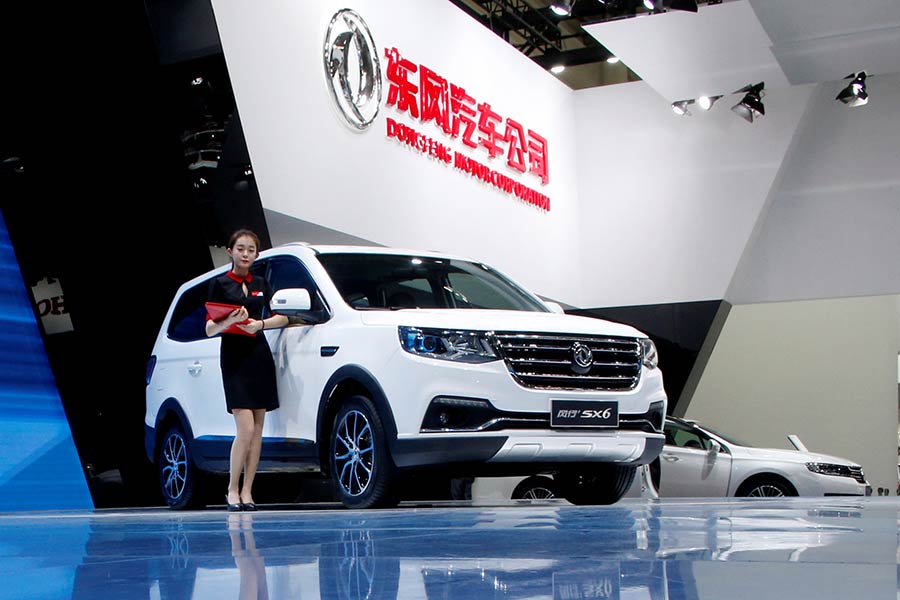Dongfeng Motor reaps reform rewards with big global strides

State-owned carmaker Dongfeng Motor Corp has reaped the rewards of China's reform and opening-up strategy with its steady growth in the last 40 years and rapid strides in overseas markets.
Since its inception in a mountainous village in Shiyan county of Wuhan, Hubei province in 1969, the company has become one of the largest automobile manufacturers in the country with production lines spanning from passenger cars, military off-road vehicles to trucks.
"Dongfeng started in the mountains, but the 'mountains' have not blocked its vision for reform and development," said Zhu Yanfeng, president of Dongfeng. "Reform is not the goal but the tool to vitalize the company for further growth and increase its core competitiveness edge."
In the reform side, guided by the mixed ownership economy, Dongfeng has adopted various strategies including shareholding, mergers and acquisitions and cooperation to stimulate the vitality of the State-owned enterprise. In 2005, its investment holding company Dongfeng Motor Group Co Ltd was listed on the Hong Kong bourse, a significant step in its strategic reforms.
"The goal was to separate the collective factory from the State-owned enterprise, and finally become a market-oriented independent legal entity with clear property rights," said Zhu. "It was conductive in upgrading the mechanism and structure and for sustainable growth."
According to company data, Dongfeng's sales have grown at a steady pace of 30 percent year-on-year from 2000 to 2007. It sold 4.12 million vehicles and achieved revenue of 631 billion yuan last year, up 10.2 percent on an annual basis. Net profit for the period stood at 41.1 billion yuan, up 7.8 percent year-on-year.
At the same time, the company is banking heavily on globalization to achieve its goal of becoming a leading automobile manufacturer in the world, according to Zhu.
"The company will grasp opportunities arising from the Belt and Road Initiative and speed up its expansion pace in overseas markets," said Li Junzhi, head of the international business department of Dongfeng. He said the company's going-out strategy is four-pronged - Euro-Asia, Asia-Australia, Asia-Africa and Asia-America.
The company has also been making efforts to move up the industrial chain. In 2012, Dongfeng acquired T-Engineering in Sweden, which subsequently became its first overseas research and development center. In 2016 it set up a manufacturing base in Iran with production capacity of 30,000 vehicles and followed it up with a sales unit in Russia in 2017.
According to company data, in 2017, Dongfeng exported 65,000 vehicles, a year-on-year increase of 55.3 percent, far higher than the industry average of 26.6 percent. It is planning sales of 150,000 units in overseas markets along with plans to enter mainstream auto markets in the United States and Europe by 2020 .
"Since 2017, exports of Chinese automobiles have been gaining ground," said Luo Lei, deputy secretary-general of the China Automobile Dealers Association.
"Apart from the growing global demand, the enhanced quality and brand awareness of Chinese automobiles has helped boost exports," he said. "The Chinese manufacturing sector is switching its focus from speed to quality."
"Unlike top players in the world, Chinese commercial vehicle manufacturers need to catch up with R&D, marketing, industrial chain and customer service systems," said Zhong Weiping, secretary-general of the commercial vehicle unit of CADA. "The next step is to further upgrade the industry through overseas competition."

